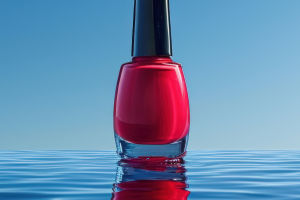Shoemaking is an ancient art that combines creativity, precision, and craftsmanship.
The techniques have evolved over centuries, but modern shoemakers still rely on time-honored methods, often using advanced tools and technology.
Below, we explore some contemporary shoemaking techniques that shape the quality and durability of shoes today!
1. Lasting: The Heart of Shoemaking
The process of "lasting" is one of the most crucial steps in shoemaking. The "last" refers to the mold or form that gives the shoe its shape. Modern shoemakers use computer-aided design (CAD) software to create custom lasts tailored to the wearer’s foot. This innovation ensures an ergonomic fit, improving comfort and reducing the likelihood of foot problems. In addition to comfort, the shape of the last plays a major role in the overall aesthetics of the shoe, giving it an elegant silhouette.
2. Stitching: The Art of Precision
Shoe stitching is not just about attaching parts together, it's about precision and durability. Today, hand stitching is often used for high-end shoes, with artisans employing techniques such as the "Goodyear welt" or "Blake stitching." Goodyear welt construction involves stitching the upper leather to a welt, which is then stitched to the sole.
This technique adds strength, water resistance, and the ability to resole the shoes multiple times. Meanwhile, Blake stitching is more streamlined, offering a more flexible, lightweight design often seen in sleek dress shoes.
3. Cutting and Shaping Leather
Leather cutting has significantly improved with the integration of laser technology, allowing for clean, precise cuts that reduce waste. Artisans still cut leather by hand in certain high-quality shoemaking brands, using special knives that follow the natural grain of the leather for the most efficient cut.
In addition, the leather is often prepped by soaking it in oils or conditioning agents, enhancing its softness and longevity. Today, designers experiment with a wide variety of leathers—ranging from vegetable-tanned to exotic skins—each requiring unique treatment processes.
4. Sole Construction: Innovating for Durability and Comfort
The sole of a shoe not only impacts its function but its aesthetic appeal. Modern shoemaking incorporates a variety of materials and construction methods. Rubber soles, for example, are now molded to provide exceptional grip and comfort, while leather soles are crafted using traditional methods for their elegant appearance.
Recently, some shoemakers have turned to EVA (Ethylene-Vinyl Acetate) soles for lightweight, cushioned support. EVA soles are used in sports shoes and casual footwear for a soft, comfortable feel, especially for those on their feet for long periods.
5. Sustainable Practices: Eco-Friendly Shoemaking
As sustainability becomes more important to consumers, shoemakers are exploring eco-friendly options. Innovations in biodegradable materials, like cork and recycled rubber, are increasingly being incorporated into shoe construction.
Additionally, new techniques like waterless dyeing, which eliminates the need for excessive water in the production process, have emerged. Recycled materials, such as ocean plastics, are now being used in the production of shoe uppers and soles, making the entire process greener and reducing environmental impact.
6. 3D Printing: The Future of Footwear
The future of shoemaking lies in technology. 3D printing allows for intricate and personalized designs that are impossible to achieve with traditional methods. Custom-fitted shoes can now be designed using a 3D printer, creating a perfectly tailored fit for each foot. This process also reduces material waste and speeds up production, offering consumers a more efficient and personalized buying experience. As 3D printing technology evolves, we can expect to see more advanced methods of creating custom shoes at scale.
7. Finishing Touches: Crafting the Perfect Look
Shoemaking is not just about the structure, it’s about the details. The final stages of shoemaking involve polishing, dyeing, and applying protective coatings to enhance both the appearance and durability of the shoe. Modern finishes often include waterproof treatments, while old-school methods may use beeswax or oils to nourish and protect the leather. The color of the shoe is achieved through a combination of natural dyes and synthetic pigments, creating rich, long-lasting shades.
Shoemaking is a fascinating blend of ancient techniques and modern innovation. Whether it's the traditional handcrafting methods of yesteryear or the cutting-edge technologies of today, each pair of shoes tells a unique story of craftsmanship and creativity. By combining time-tested skills with new materials and technologies, shoemakers are continually pushing the boundaries of what is possible, offering consumers shoes that are not only beautiful but functional and sustainable.
With the increasing trend toward customization and eco-friendly practices, the future of shoemaking looks brighter than ever!

